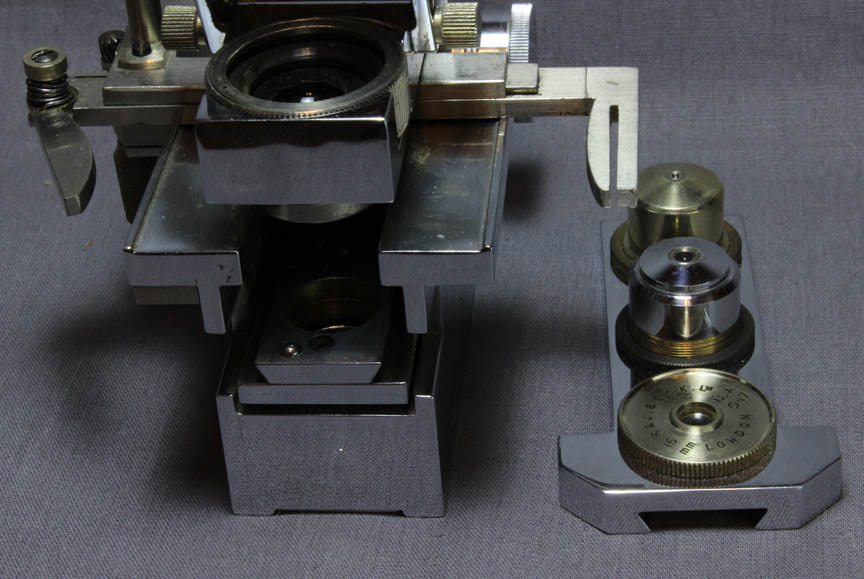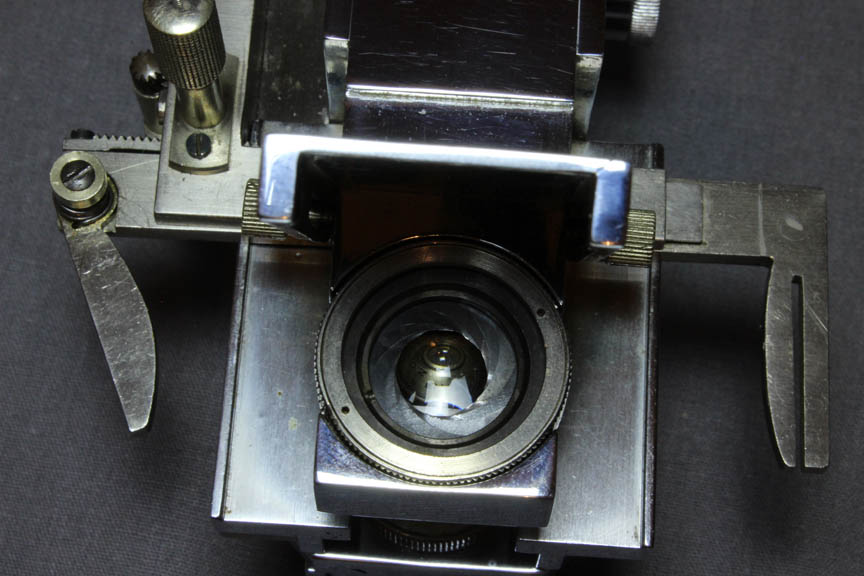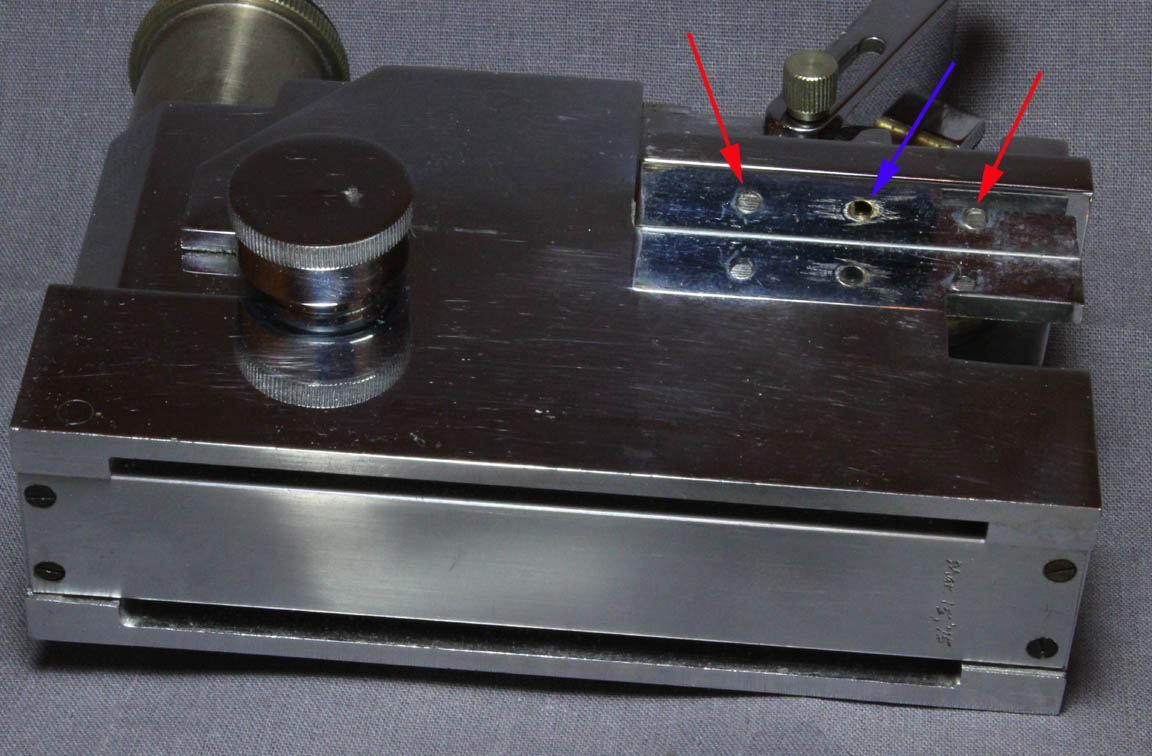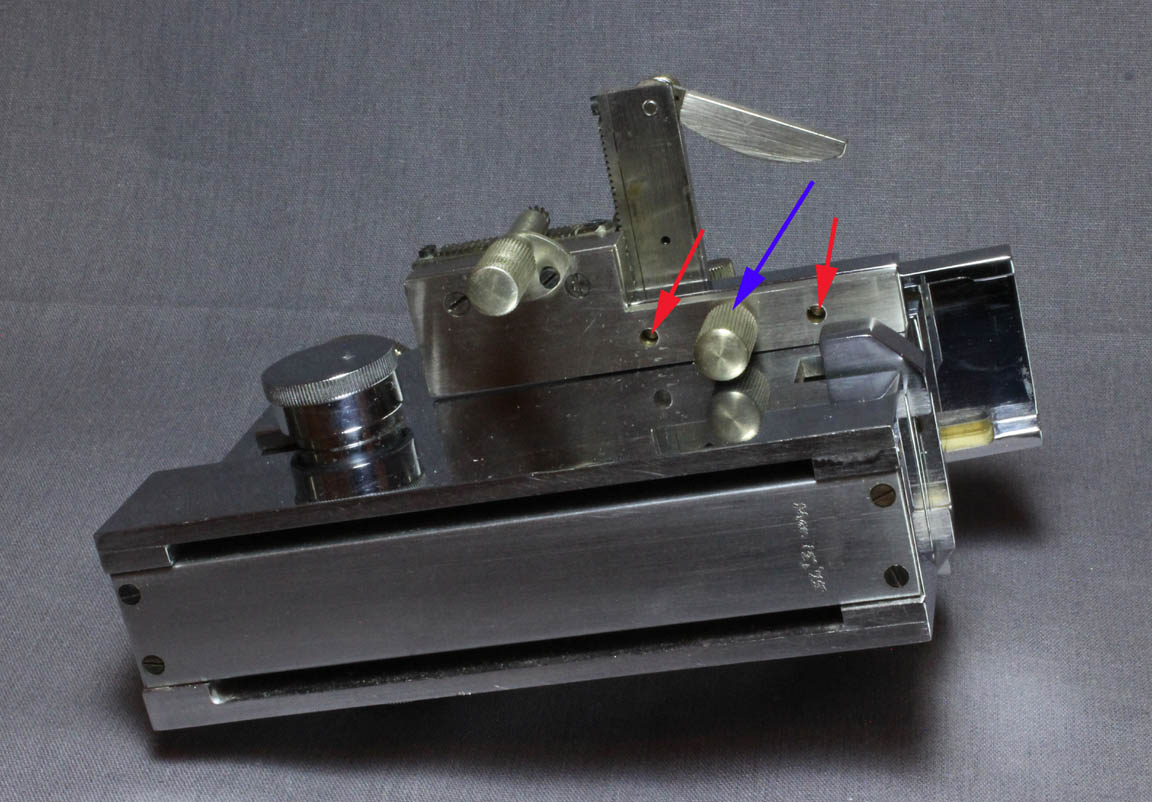| DESCRIPTION | HISTORY |
Please Click On Any Picture for a Larger Version
 objective slider has a female dovetail sliding into the male dovetail on the microscope body. This differs from later models in which the objective slider was male. A sprung ball bearing on one side near the front of the body registers each objective slider via indentations on the underside of the slider. There are three objectives including the low power 16mm, and what is likely a 40X and lastly, a high power oil immersion objective. The 16mm objective is free to rotate up and down via its threads; the other two objectives have lock nuts to hold them in position.
objective slider has a female dovetail sliding into the male dovetail on the microscope body. This differs from later models in which the objective slider was male. A sprung ball bearing on one side near the front of the body registers each objective slider via indentations on the underside of the slider. There are three objectives including the low power 16mm, and what is likely a 40X and lastly, a high power oil immersion objective. The 16mm objective is free to rotate up and down via its threads; the other two objectives have lock nuts to hold them in position.  Two small knurled-head knobs tighten to hold on the flip-up lid/mirror. Under this is a condenser with iris which fits into a short threaded drawtube for it. The condenser drawtube, must be raised by unscrewing it to allow clearance for slides and for focusing the condenser on the specimen. It must be lowered to be able to close the lid/mirror. The condenser has a built-in iris diaphragm. The iris is adjusted by turning the condenser, a tiny knob controlling it protruding to make contact with the side of the microscope.
Two small knurled-head knobs tighten to hold on the flip-up lid/mirror. Under this is a condenser with iris which fits into a short threaded drawtube for it. The condenser drawtube, must be raised by unscrewing it to allow clearance for slides and for focusing the condenser on the specimen. It must be lowered to be able to close the lid/mirror. The condenser has a built-in iris diaphragm. The iris is adjusted by turning the condenser, a tiny knob controlling it protruding to make contact with the side of the microscope. 
 The very well made mechanical stage is of a slightly different finish than the rest of the microscope, suggesting it was an addition, perhaps developed a bit later than the microscope itself. The mechanical stage is controlled by knurled knobs which have a hatched knurling as opposed to the simple unidirectional knurling of the other microscope controls. Movements are by diagonal racks and pinions. There is a spring on the right side slide clip to hold it against the slide, and the left sided one is curved with a slot in it. The mechanical stage attaches by registering its two holes(red arrows) on small pins on the bottom of the stage and is held in place by a single knurled screw in between the two pins, screwing up from the bottom through a third hole in the center (blue arrow). The slide for right-left motion is rectangular and for forward-backward motion is a dovetail. The quality of machining is very high, and the mating with the microscope very sound, suggesting this was a professionally made accessory. The fact that the case seems made to accomodate the microscope with the mechanical stage in place also suggests this was a factory addition. Although the two mechanical stage control knobs are covered with cross-hatched knurling, the center scew holding the stage in place has unidirectional knurling.
The very well made mechanical stage is of a slightly different finish than the rest of the microscope, suggesting it was an addition, perhaps developed a bit later than the microscope itself. The mechanical stage is controlled by knurled knobs which have a hatched knurling as opposed to the simple unidirectional knurling of the other microscope controls. Movements are by diagonal racks and pinions. There is a spring on the right side slide clip to hold it against the slide, and the left sided one is curved with a slot in it. The mechanical stage attaches by registering its two holes(red arrows) on small pins on the bottom of the stage and is held in place by a single knurled screw in between the two pins, screwing up from the bottom through a third hole in the center (blue arrow). The slide for right-left motion is rectangular and for forward-backward motion is a dovetail. The quality of machining is very high, and the mating with the microscope very sound, suggesting this was a professionally made accessory. The fact that the case seems made to accomodate the microscope with the mechanical stage in place also suggests this was a factory addition. Although the two mechanical stage control knobs are covered with cross-hatched knurling, the center scew holding the stage in place has unidirectional knurling. "British Made". It has four compartments in addition to the one for the microscope itself. One contains a corked bottle of immersion oil. The microscope can fit in the case with the mechanical stage attached. The outside of the case has loops on the sides for a strap(not present).